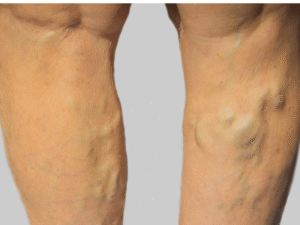Table of Contents
From Freeze to Fight or Flight Response
Our bodies are equipped with instinctive reactions to threats and shows an adaptive survival mechanism where the body is wired to initiate a stress response that can take multiple forms, including fighting, fleeing, or freezing. This article explores what happens when you experience a freeze response and why it sometimes evolves into a trauma response following common traumatic events. We will examine phenomena such as functional freeze, freeze mode, freeze response, and even the fawn response, offering insight into mental health conditions like post-traumatic stress disorder.
What is Fight, Flight, or Freeze?
In dangerous situations, the fight-or-flight response prepares the body to either fight the threat directly or flee. However, when the danger is overwhelming or the perceived threats are too intense, the body may instead trigger a freeze response as an alternative to fighting or fleeing. This reaction is common in stressful situations where the mind and body opt for immobilization.
What is Functional Freeze?
Functional freeze refers to a state in which the body and mind temporarily shut down as an adaptive response to overwhelming stress. This state of immobilization helps conserve energy when action seems impossible. During functional freeze, individuals often experience numbness, detachment, and dissociative feelings that can protect them from the full emotional impact of trauma, yet may complicate recovery later on.
What is Freeze Mode?
Freeze mode is characterized by a complete cessation of movement a condition where individuals not only become immobile but can also get stuck in stunned. In such cases, many report that they feel numb or detached from their surroundings, with a pervasive sense of detachment that makes it difficult to reconnect emotionally. This state is not always a conscious decision but a built-in reaction to acute stress, where the body opts to pause rather than act.
What is Freeze Response?
The freeze response is a rapid, involuntary immobilization that can be a potential reaction to extreme danger. It is marked by common signs, such as slowed movement and changes in the autonomic nervous system that governs our bodily functions. When the freeze response is activated, a person might feel not only detached but also dissociative, as if separated from their own body. This response is often observed when the body detects perceived threats, and it can sometimes include elements of the fawn response, an attempt to appease rather than confront danger
Understanding PTSD and Trauma Response
Exposure to repeated or severe incidents can cause the freeze reaction to become chronic, a state sometimes described as a chronic freeze. This is frequently seen in conditions like post-traumatic stress disorder, where chronic activation of the freeze response may also contribute to chronic anxiety disorders. Such persistent reactions can significantly disrupt daily life and hinder the ability to reprocess traumatic memories effectively, leaving individuals feeling persistently detached and dissociated after stressful situations.
Why Does Your Body Freeze?
Freezing is an adaptive response and a common reaction to stress or a threat. Several factors contribute to this phenomenon:
- Energy Conservation:
When immediate action isn’t viable, freezing allows the body to conserve energy, which can help you gain the strength needed for a later response. - Emotional and Physical Disconnect:
In overwhelming situations, the body might disconnect physically or mentally. This can manifest as a lack of sensation or detachment, protecting the individual from overwhelming emotional pain in the moment. - Survival in Unsafe Environments:
Remaining still can lower the chances of detection. Even though an increased heart rate signals distress, this reaction is an adaptive response designed to minimize harm in stressful situations.
Causes of Functional Freeze
• Past Trauma: Exposure to previous traumatic events can sensitize the body’s response to stress.
• Chronic Stress: Ongoing stress over time may lead to persistent shutdown reactions.
• Prolonged Overwhelm: Continuous exposure to overwhelming situations triggers the freeze mechanism.
• Repeated Exposures: Recurring stressful incidents can cause the response to become chronic, leading to difficulties in daily functioning.
• Shutdown Reaction: The body’s tendency to “shut down” under extreme stress results in a lack of sensation and detachment.
Treatment for Functional Freeze and Trauma Responses
Effective therapies that help address the freeze response involve a combination of somatic, cognitive, and body-based techniques:
- Somatic Experiencing (SE):
This approach works to release stored trauma by heightening bodily awareness. Incorporating grounding exercises, which help you anchor yourself in the present moment, along with deep breathing techniques, can be particularly beneficial in reducing symptoms of numbness and detachment. - Cognitive-Behavioral Therapy (CBT):
CBT targets and reshapes thought patterns and behaviors that sustain the freeze reaction, providing individuals with tools to alter their reaction to stress. - Eye Movement Desensitization and Reprocessing (EMDR):
EMDR employs guided eye movement techniques to reprocess traumatic memories, aiding the brain in recalibrating its response to triggers. - Trauma-Sensitive Yoga or Somatic Exercises:
Incorporating activities such as yoga can offer practical ways to break free from immobilization. These exercises encourage individuals to express their feelings and help the body move past being frozen in fear. - Polyvagal Theory-Based Interventions:
These methods focus on activating the parasympathetic nervous system and regulating the dorsal vagal complex, which can mitigate the freeze response from becoming chronic.
Unique Insights into the Freeze Response Condition
- Multifaceted Nature: The freeze response is not a one-size-fits-all reaction; it manifests differently among individuals.
- Fawn Response: Some may resort to a fawn response, trying to please others while struggling to make decisions.
- Immobilization Factors: The condition can be marked by a profound lack of sensation, dissociation, or detachment.
- Rapid Shift: The initial activation of the sympathetic nervous system (fight-or-flight) can swiftly transition into immobilization.
- Subtle Indicators: Physical signs, such as minor eye movement changes, may reveal the onset of a freeze state.
- Impact on Daily Life: The freeze response can erode one’s sense of control, making even routine tasks challenging.
Navigating Recovery and Building Resilience
Recovery from these immobilizing reactions is a gradual journey toward healing. By focusing on targeted therapies that help and integrating practical coping strategies, individuals can begin to regain the ability to act when faced with stress. Techniques such as grounding exercises, which bring you into the present moment, and deep breathing can significantly alleviate feelings of numbness, dissociation, and detachment. Over time, these efforts can transform a freezing reaction into a more adaptive response, allowing one to break free from being stuck in a stunned state and no longer respond in that manner when confronted with stress or a threat.
Conclusion
Understanding the full spectrum—from functional freeze and states of being stunned to the more acute freeze response—is key to effective intervention. While the natural fight-or-flight response equips us to respond to danger, there are instances when the body opts for immobilization, a reaction that triggers a shutdown. Recognizing and intervening in these patterns not only provides ways to break free from immobilization but also helps restore a balanced reaction to stress. With the right combination of therapies, practical coping strategies, and support from mental health professionals, anyone on this path can reclaim their power and embark on a transformative journey toward healing, moving beyond being stuck and regaining the ability to act rather than remaining frozen in fear.



